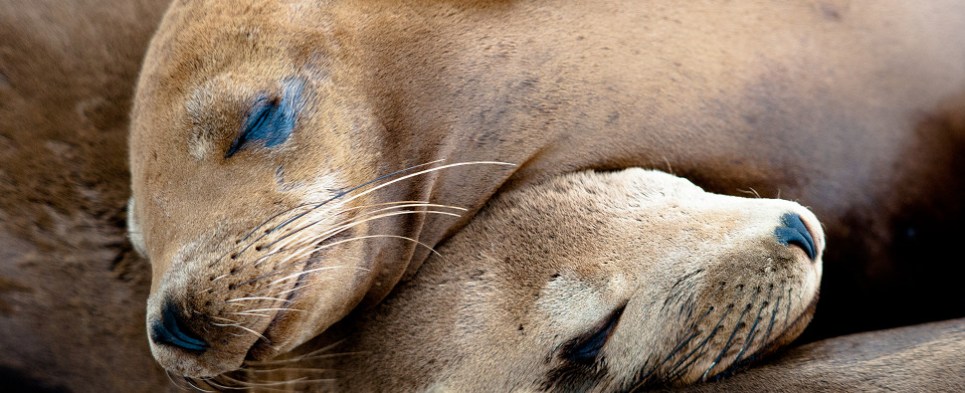Socal Harbor Ecosystem Dramatically Improved
Years of efforts to reduce environmental impacts related to goods movement have resulted in a flourishing ecosystem for fish and marine mammals, according to a new report on the water and habitat quality of the Long Beach and Los Angeles harbors.
The survey, conducted in 2013 and 2014 through an ongoing partnership between the ports of Long Beach and Los Angeles, identified 558 species of plants and animals living on the rocks and pilings in the harbors. This represents a 60 percent increase from the last survey in 2008 and almost twice the number cataloged in the 2000 survey.
Water quality conditions also improved, with oxygen and phytoplankton measurements higher than ever before. Fish were abundant, and giant kelp beds expanded to cover as much as 132 acres of Outer Harbor waters; maximum kelp coverage reached only 27 acres in 2000 and 80 acres in 2008.
“There’s growing biodiversity in the harbors, including more birds and marine mammals, and we’re seeing species that cannot thrive in polluted waters,” said Long Beach Board of Harbor Commissioners President Lori Ann Guzmán. “We should all be proud of these results and continue to work hard to build on this progress.”
The ports and resource agencies that oversee wildlife in the harbors use the survey results to evaluate progress in improving the health of the natural resources under their stewardship.
The 2013-2014 survey looked at water quality and sediments, fish and other sea life, birds, and marine mammals at up to 32 stations in the inner and outer harbors of both ports over three seasons.
The survey found a dramatic improvement in water and sediment quality. Up until the 2000 survey, large areas of the Inner Harbor showed significant signs of pollution stress. Now those areas closely resemble the Outer Harbor in terms of habitat quality.
The study sampled pelagic (free-swimming), demersal fish (bottom-dwelling), shallow-water fish (only in Los Angeles Harbor), and fish eggs and larvae. Almost three quarters of a million pelagic fish, or three tons of fish, belonging to 35 different species, were collected by the sampling teams.
As in previous studies, northern anchovy made up over 90 percent of the catch. Anchovy is an important food for several bird species, some marine mammals, and other fish species, and supports a bait fish industry.
The sampling of bottom-dwelling fish captured nearly 20,000 belonging to 58 different species and weighing over a ton. As in previous surveys, white croaker and queenfish were among the most abundant species. White croaker and queenfish are not significant components of the coastal fish community outside the port complex, so their abundance in the harbors suggests that the harbor environment is particularly favorable to these species.
California sea lions were the most abundant marine mammal in the harbors. The 587 animals seen on the 12 monthly surveys accounted for two-thirds of all marine mammals spotted during the study. They were present throughout the harbor, resting on buoys, docks, riprap, and even on the bows of cargo ships, and were often seen either following fishing boats or hanging around fish markets and restaurants. The 223 harbor seals observed resting on the rocks of the breakwaters or foraging along the rocky shorelines represented a quarter of all marine mammal sightings.





Leave a Reply